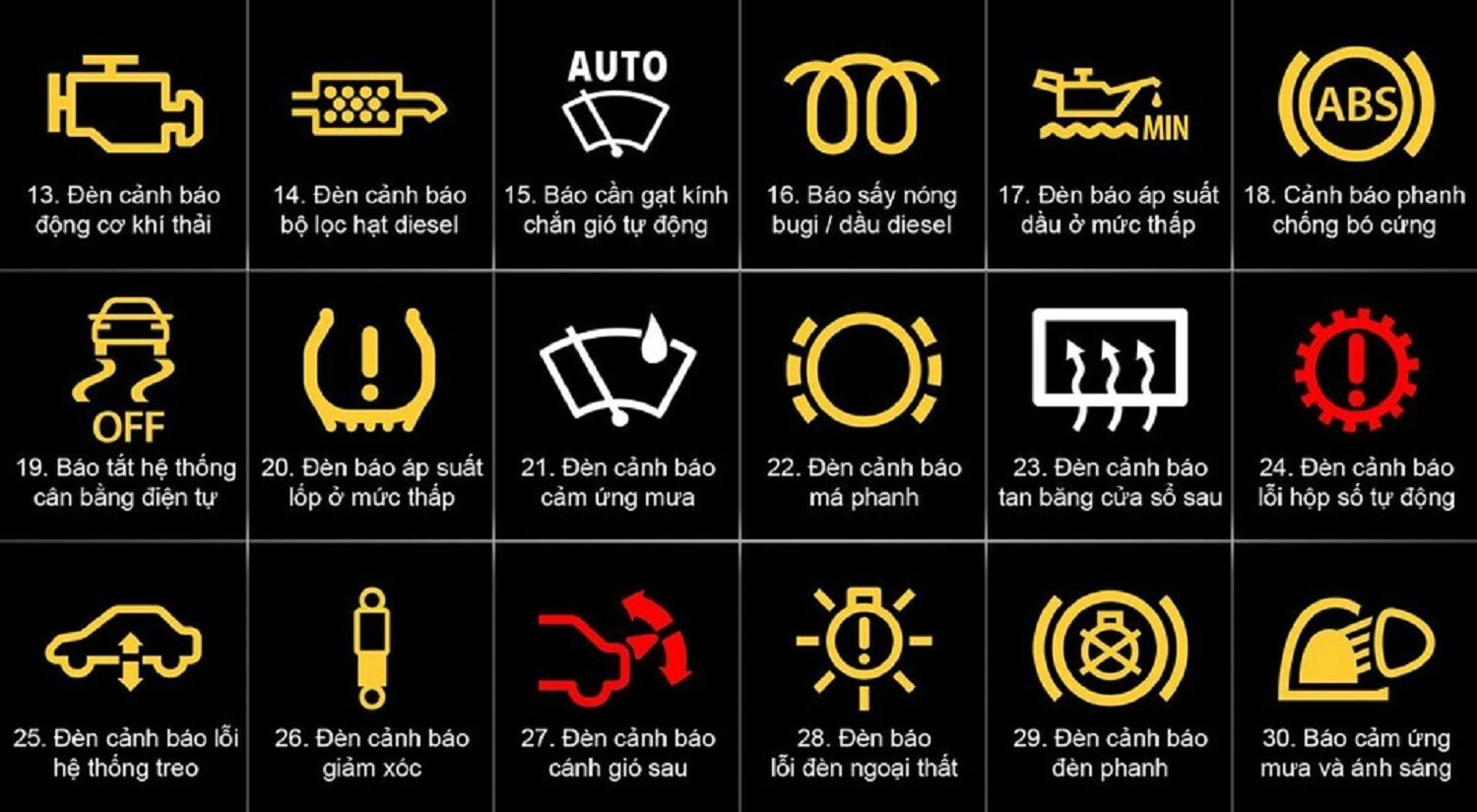Warning signals on cars are very important for drivers to ensure the safety of the car as well as the passengers.

Therefore, checking and recognizing these signs is especially important and drivers must pay close attention.
Some common warning lights:
- Handbrake warning light on: The handbrake may not be lowered when the accelerator is pressed. At this time, check and release the handbrake.
- Temperature warning light: Warning that the engine temperature is hotter than the allowable standard.
Cause: There may be a lack of coolant or a problem with the coolant system; the thermostat or fan may be running constantly, causing the engine to overheat and consume more fuel.
How to handle: Stop the car to check the coolant, add more if the radiator is low or empty. Then turn off the engine for about 30 minutes - 1 hour. If the light is still on, call for help to have the car checked. Do not continue to start the car, because the engine temperature is too high, it can cause the engine to seize, warp and destroy the engine.
If the light comes on repeatedly, have the vehicle's cooling system checked.
- Low oil pressure indicator light: Lack of oil or damaged oil pump, clogged inlet; using fake, poor quality oil.
Solution: Stop the car to check the oil, ask the car manufacturer for help, take the car in for inspection. Because lack of oil can cause the engine to seize, the engine parts are not lubricated/cooled, causing damage.
- Automatic transmission oil temperature warning light: Transmission oil temperature is too high.
Cause: The vehicle is continuously running at high speed for a long time or the gearbox oil is not up to standard.
How to handle: Stop the vehicle to cool.
- Power steering warning light (EPS): Power steering sensor is faulty or damaged.
How to handle: Realign the power steering sensor with a specialized machine or replace the sensor depending on the specific condition.
- Airbag warning light: Airbag system malfunction.
How to handle: Take the car to the service center or the dealer for inspection.
- Battery fault warning light: Battery is dead due to battery consumption. This signal only appears when the engine is off.
Solution: Check and recharge the battery.
- Steering wheel lock indicator light: Steering wheel is locked.
Solution: Check and unlock the steering wheel.
- Ignition switch indicator light: The ignition switch is in the closed position.
Solution: Turn on the ignition switch.
- Seat belt indicator light: One or more seat belts are not fastened.
Solution: Check and fasten seat belts in all seats.
- Door open indicator light: One or more doors are not properly closed.
Solution: Check and close all car doors.
- Hood and trunk open indicator light: The hood and trunk are not properly closed.
Treatment: Check and close the hood and trunk.
- Anti-lock braking system (ABS) warning light: Wheel sensors detect that the anti-lock braking system is not working or is working poorly.
Cause: The ABS sensor is dirty or damaged, or the vehicle is stuck in mud, snow, or the wheels are spinning.
How to handle: Take the car to the dealer or garage for inspection.
- Electronic balance system warning light (anti-slip): The electronic balance system helps the vehicle balance (anti-slip) when driving on slippery roads, increasing traction when having to steer a lot.
How to handle: Turn on the anti-skid system for safer driving
- Tire pressure warning light: One or more tires are underinflated.
How to handle: Check tires, inflate to standard.
- Brake pad warning light: The brake pads of one or more wheels are worn beyond standard.
How to handle: Take the car in for inspection, replace the brake pads
- Automatic transmission fault warning light: The automatic transmission is experiencing a fault.
How to handle: Do not drive, but call for help to take the car for inspection.
- Suspension fault light: The vehicle's suspension system is having problems.
How to handle: Take the car to a garage or dealer for inspection.
- Shock absorber warning light: The shock absorber system may be faulty or the vehicle may be overloaded.
How to handle: Check the vehicle's load, take the vehicle for inspection if it is not overloaded.
- Brake light warning: The vehicle's brake light is faulty (does not light up when the brake is applied).
How to handle: Check and replace immediately to ensure safety.
- Low fuel indicator light: Gasoline or oil is running low.
Solution: Refuel at the nearest gas station.
- Hazard warning lights: Hazard warning lights are on.
Solution: Turn on this light to notify people to avoid going near the vehicle…
University (according to VTC News)